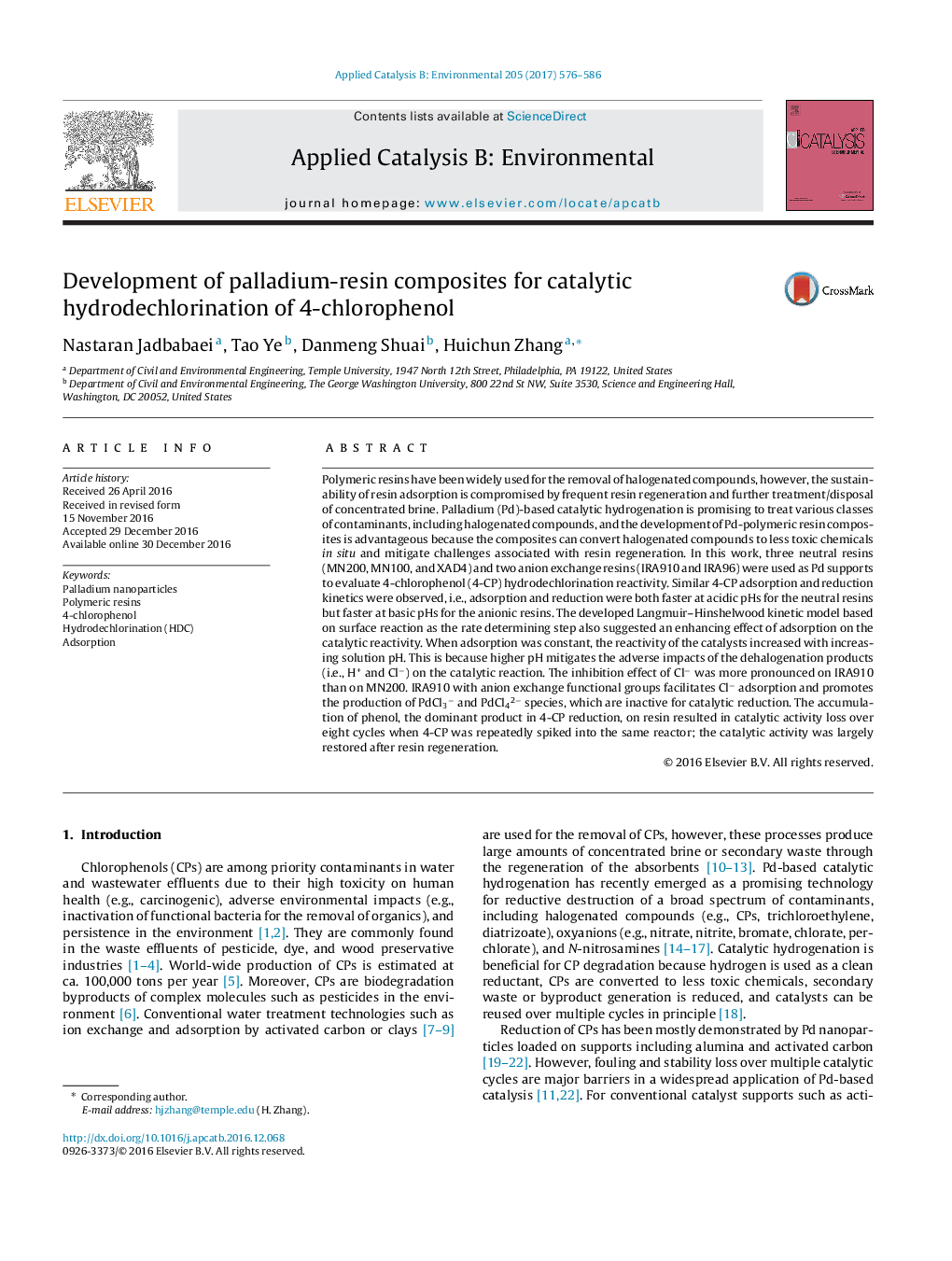| کد مقاله | کد نشریه | سال انتشار | مقاله انگلیسی | نسخه تمام متن |
|---|---|---|---|---|
| 6454392 | 1418815 | 2017 | 11 صفحه PDF | دانلود رایگان |
- Hydrodechlorination of 4-CP by developed Pd/resin catalysts was mainly dependent on solution pH and adsorption affinity of the resins.
- Rate determining step for the hydrodechlorination changed from adsorption at low concentrations to surface reaction at high concentrations.
- Neutral resins were more resistant to the poising effect of Clâ than ionic resins.
- Adsorption of phenol over multiple reaction cycles resulted in the activity loss.
Polymeric resins have been widely used for the removal of halogenated compounds, however, the sustainability of resin adsorption is compromised by frequent resin regeneration and further treatment/disposal of concentrated brine. Palladium (Pd)-based catalytic hydrogenation is promising to treat various classes of contaminants, including halogenated compounds, and the development of Pd-polymeric resin composites is advantageous because the composites can convert halogenated compounds to less toxic chemicals in situ and mitigate challenges associated with resin regeneration. In this work, three neutral resins (MN200, MN100, and XAD4) and two anion exchange resins (IRA910 and IRA96) were used as Pd supports to evaluate 4-chlorophenol (4-CP) hydrodechlorination reactivity. Similar 4-CP adsorption and reduction kinetics were observed, i.e., adsorption and reduction were both faster at acidic pHs for the neutral resins but faster at basic pHs for the anionic resins. The developed Langmuir-Hinshelwood kinetic model based on surface reaction as the rate determining step also suggested an enhancing effect of adsorption on the catalytic reactivity. When adsorption was constant, the reactivity of the catalysts increased with increasing solution pH. This is because higher pH mitigates the adverse impacts of the dehalogenation products (i.e., H+ and Clâ) on the catalytic reaction. The inhibition effect of Clâ was more pronounced on IRA910 than on MN200. IRA910 with anion exchange functional groups facilitates Clâ adsorption and promotes the production of PdCl3â and PdCl42â species, which are inactive for catalytic reduction. The accumulation of phenol, the dominant product in 4-CP reduction, on resin resulted in catalytic activity loss over eight cycles when 4-CP was repeatedly spiked into the same reactor; the catalytic activity was largely restored after resin regeneration.
123
Journal: Applied Catalysis B: Environmental - Volume 205, 15 May 2017, Pages 576-586
